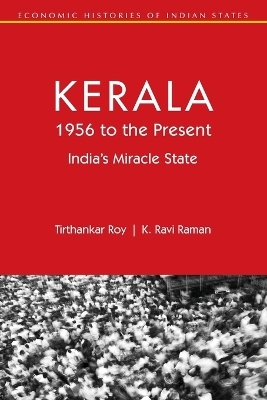
Kerala, 1956 to the Present
Cambridge University Press (Verlag)
978-1-009-52165-9 (ISBN)
- Lieferbar (Termin unbekannt)
- Versandkostenfrei
- Auch auf Rechnung
- Artikel merken
'Kerala is different, but not in the way we think.' Economic change in this southern state has fascinated economists. Most studies focused on the state's unusual human development, asked how a poor and economically stagnant state could achieve high levels of education and healthcare and pointed to politics and government policy to answer the question. Little of that scholarship took history seriously. History, this book says, shows that the foundations of human development were laid before the formation of the state and were owed to many factors besides politics. The striking thing about the state is its unusual income growth, which has been faster than most states since the 1990s. The question the authors ask is, 'How could an income-poor state break out of stagnation so dramatically?' The answers consider past globalisation, labour mobility, a legacy of welfare spending, and the positive ways these features interacted since India's economic reforms.
Tirthankar Roy is Professor of Economic History at London School of Economics and Political Science. His recent and forthcoming books include A Business History of India: Enterprise and the Emergence of Capitalism since 1700 (Cambridge University Press, 2018); An Economic History of Colonialism (with Leigh Gardner, Bristol University Press, 2020); and Law and the Economy in a Young Democracy: India since 1947 (with Anand Swamy, University of Chicago Press, forthcoming). He has published extensively on South Asian history and development and has taught South Asia and Global History courses. K. Ravi Raman is currently a member of the State Planning Board, Government of Kerala. He is also an honorary research fellow in the Department of Development Studies, SOAS, London, and affiliated researcher at the University of Bergen, Norway.
Preface; List of Tables; List of Figures; 1. Introduction; 2. Before Independence; 3. The Retreat of Agriculture; 4. Capital: Retreat and Resurgence; 5. Work, Labour, and Migration; 6. Growth and Development; 7. The Left Legacy; 8. Geography: An Asset or a Challenge?; 9. Conclusion; References.
| Erscheinungsdatum | 19.11.2024 |
|---|---|
| Reihe/Serie | Economic Histories of Indian States |
| Zusatzinfo | Worked examples or Exercises |
| Verlagsort | Cambridge |
| Sprache | englisch |
| Themenwelt | Geschichte ► Teilgebiete der Geschichte ► Wirtschaftsgeschichte |
| Wirtschaft ► Volkswirtschaftslehre ► Wirtschaftspolitik | |
| ISBN-10 | 1-009-52165-9 / 1009521659 |
| ISBN-13 | 978-1-009-52165-9 / 9781009521659 |
| Zustand | Neuware |
| Haben Sie eine Frage zum Produkt? |
aus dem Bereich


